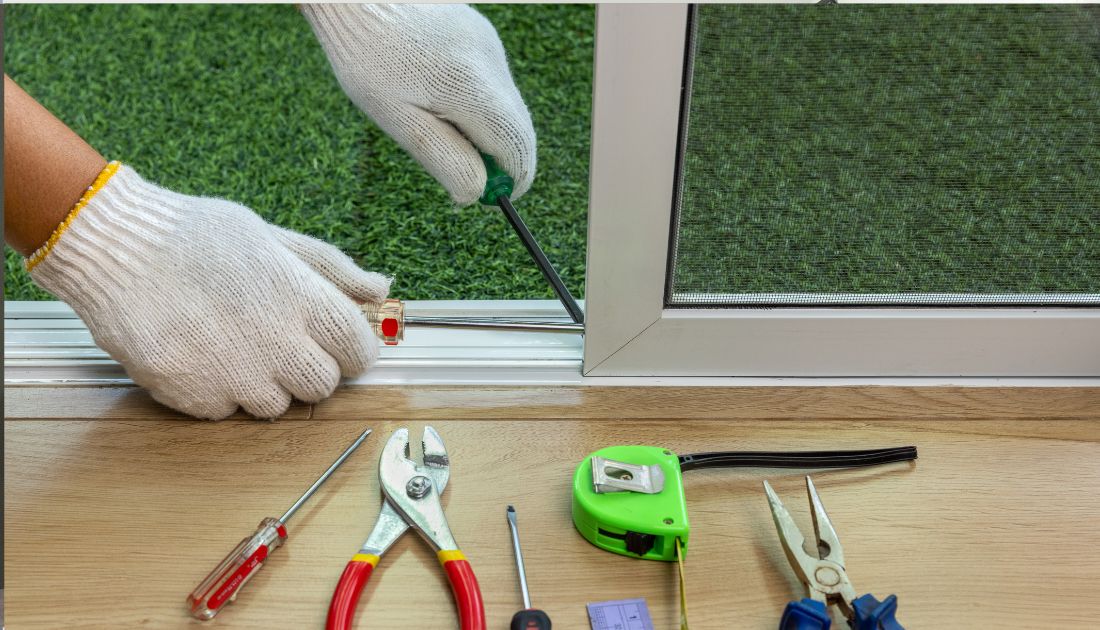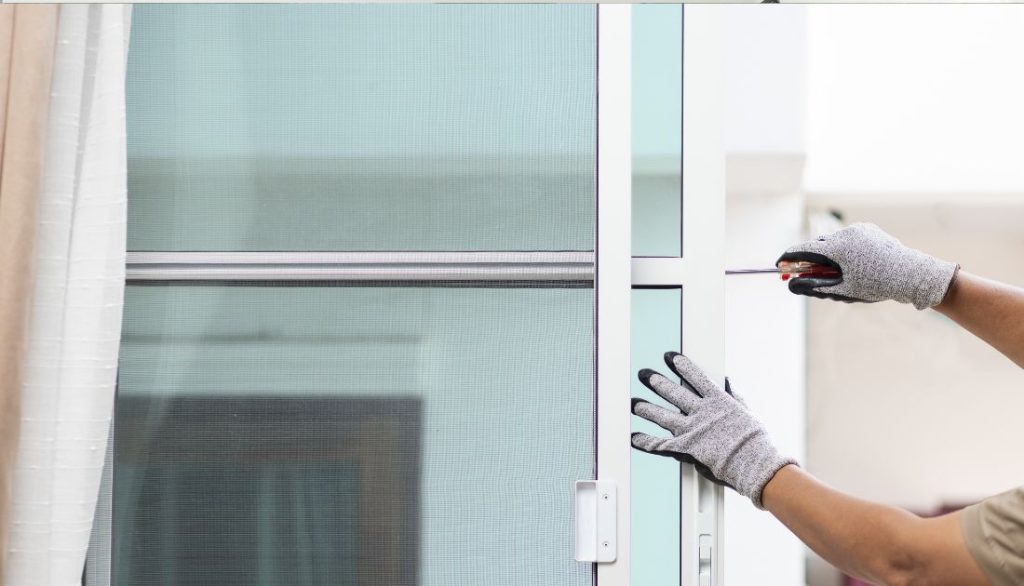Table of Contents
Screen doors are a common feature in many homes, providing a convenient way to let fresh air into your living space while keeping insects and debris out. However, wear and tear can take their toll on these essential barriers over time, leading to issues such as sagging, sticking, or even holes.
Is your screen door in need of some repair? Don’t worry. You don’t have to be a professional handyman to get the job done. You can easily tackle this project with just a few tools and some basic know-how.
Repairing your screen door can seem daunting, but with our easy-to-follow guide, you can handle it like a pro. Whether your screen is torn, has holes, or needs an adjustment, we’ve got you covered. Following our instructions carefully and taking your time throughout each step, you’ll be amazed at how simple it is to restore your screen door to its former glory.
Assessing the Damage: Identifying Common Issues with Screen Doors
Torn Screens: Look for visible tears, holes, or punctures in the screen material that may let insects inside.
Loose Frames: Check if the screen door frame is loose or misaligned. This can make opening and closing the door difficult.
Broken Hardware: Inspect hinges, handles, and latches for any signs of damage or wear that may affect the functionality of your screen door.
Gathering Your Tools: Essential Equipment for Screen Door Repair
Utility knife: A sharp utility knife is essential for cutting new screen material to the correct size and removing damaged sections of your current screen door.
Screen spline roller: This tool is necessary for securely installing the screen into the frame with a snug fit, preventing any loose edges or wrinkles.
Flathead screwdriver: Use this tool to gently pry out the old spline from the groove in your door frame before replacing it with new material.
Measuring tape: Accurate measurements are crucial when cutting and fitting new screen material, so be sure to have a measuring tape on hand.
Replacement screen material: Whether you opt for fiberglass or aluminum mesh, having replacement screen material ready will expedite the repair process.
Having these tools at your disposal will ensure that you can efficiently tackle any repairs needed on your screen door with ease and professionalism like a seasoned pro.
Removing the Screen: Step-by-Step Instructions for Disassembly
Removing the Screen
- Begin by taking off the door from its hinges and laying it flat on a clean, stable surface.
- Use a screwdriver to remove any screws holding the screen frame in place.
- Gently pry out the spline from around the edges of the frame using a spline tool or flat-head screwdriver.
- Once the spline is removed, carefully lift out the old screen material. Be mindful not to damage the frame during this process.
Disassembling Further
Inspect all parts of the screen door for any signs of damage or wear that may need replacing.
Clean any dirt or debris from both sides of each component before reassembly.
Take note of how everything was put together initially to ensure proper reinstallation later on.
By following these steps carefully, you can successfully disassemble your screen door like a pro and proceed with repairing it effectively.
Repairing the Frame: Fixing Sagging and Loose Components
Assess the Damage: Begin by inspecting the frame of your screen door for any sagging or loose components. Look for cracks, gaps, or signs of wear and tear that may be causing issues.
Tighten Screws and Bolts: Use a screwdriver to tighten any loose screws or bolts on the frame. This simple step can often help alleviate sagging and improve the overall stability of your screen door.
Reinforce Weak Areas: If you identify weak spots in the frame, consider reinforcing them with additional screws, brackets, or wood glue. Strengthening these areas will prevent further damage and prolong the life of your screen door.
Patching Holes: Techniques for Mending Tears and Punctures
Inspect the Damage: Before repairing your screen door, carefully examine the extent of the tears or punctures to determine the appropriate patching technique.
Mesh Patch Method: For small holes and tears, cut a piece of mesh screen slightly larger than the damaged area, apply adhesive around the edges of the tear, place the mesh over it, and press down firmly to secure it in place.
Patch-on-Patch Technique: This method is ideal for larger holes or multiple tears close together. Cut a patch from spare screen material that covers all damaged areas, adhere to it using suitable glue or tape, and then trim any excess mesh for a seamless repair.
Installing New Screen Material: Tips for a Seamless Replacement
Measure the dimensions of your screen door frame accurately to ensure you purchase the correct amount of replacement screen material.
Use a sharp utility knife to cut the new screen material, allowing for a slight overlap on each side of the frame.
Start by securing one corner of the screen material with staples or screws before stretching it taut across the frame.
Work systematically around all sides, pulling and fastening the material evenly to avoid any sagging or wrinkles.
Trim any excess screen material carefully along the edges for a clean and professional finish.
Test your newly installed screen door by opening and closing it to ensure proper functionality.

Reassembling the Door
Attach the Screen: Carefully align the screen with the door frame, ensuring it fits snugly within the channels. Use a spline roller to press the spline back, securing the screen in position.
Reinstall Hardware: Reattach any hardware removed during disassembly, such as hinges, handles, and locks. Make sure everything is properly tightened to avoid any issues with functionality.
Test Operation: Before finishing up, test your screen door by opening and closing it several times to ensure smooth operation. Adjust any components if necessary for optimal performance.
By following these steps and taking time during reassembly, you can ensure that your screen door is restored to its original condition and functions like new again.
Fine-Tuning and Maintenance
Check for any loose screws or hinges on the screen door. Tighten them up to prevent further damage and ensure smooth operation. Lubricate hinges with silicone spray to keep them moving freely.
Regularly inspect the mesh screen for tears or holes. Patch up any damage with a repair kit to prevent insects from entering your home. Clean the screen door frame with mild soap and water, then rinse thoroughly.

